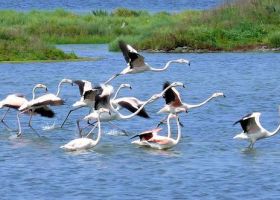Territory
Chioggia is one of the most important municipalities in the province of Venice. It is known for its port, for fishing, for salt pans, for vegetables, for the kitchen and its streets, fields, palaces and canals very similar to those of Venice, to which it is connected by private boat lines and of ACTV. The main canal is the Canal Vena, crossed by nine bridges. The most impressive is the Vigo Bridge which closes the canal behind the lagoon and the square in which there is a high column surmounted by the Leone Marciano. The legend of the origins of Chioggia tells that it was founded by Clodio, a Trojan exile, who chose as a crest a red rampant lion in memory of Troy. The name Clodia then changed over the centuries into Cluza, Clugia and then Chiozza, finally arriving at the current toponym Chioggia. In Roman times it was part of a larger centuriation that included the entire area of the Venice lagoon. In the Middle Ages the city had its own municipal autonomy and, becoming known for its flourishing salt trade, in 1110 it also became an Episcopal seat. An important page of the history of the city occurred during the “war of Chioggia”, recalled in the Palio della Marciliana: in 1379 the city fell to Genoa, attracted by the source of wealth that represented the salt pans, to then be reconquered by the Venetian intervention in 1380. Under the dominion of the Serenissima, Chioggia not only saw its own freedom limited, but also saw the number of saltworks reduced as well as the imposition of heavy taxes on salt production. The economy thus had an inexorable decline that flourished with the development of fishing. Chioggia was part of the Republic of Venice until 1797, when it fell to the troops of Napoleon Bonaparte. Following the Treaty of Campoformio, in 1798, the city passed into the hands of Austria, which remained until 1866, when Chioggia was annexed to the nascent Italian State. During the Second World War, the Allied Air Force was bombarded. Only thanks to the revolt of the citizens the Nazi-Fascists surrendered and on 27 April 1945 the city was liberated by the allied forces.
















